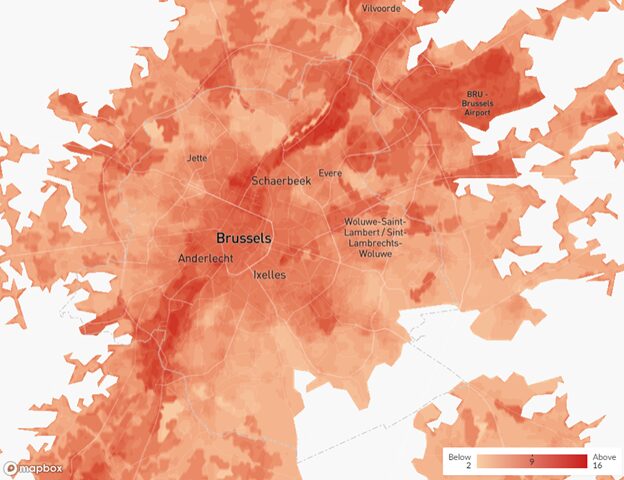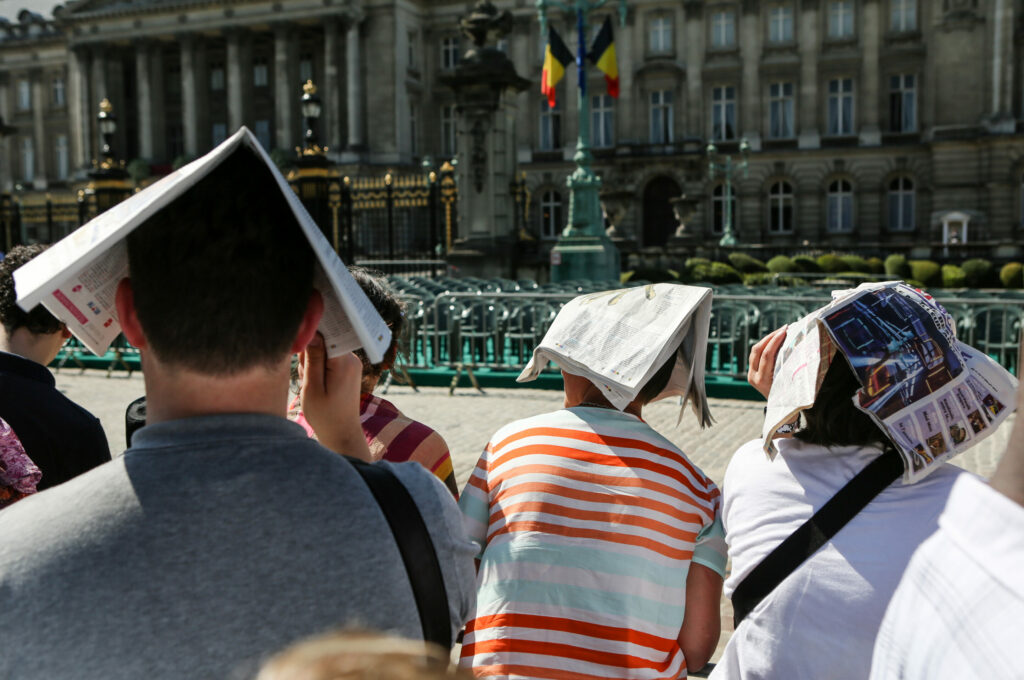Over 70% of Europeans currently live in cities – a figure expected to rise to 84% by 2050. Temperatures on the continent are simultaneously rising twice as fast as the global average, with the situation considered "critical" in Brussels.
As the fastest-warming continent, Europe is facing rising temperatures and heat-related deaths. In an Urban Insight report, architecture and engineering company Sweco analysed 24 European cities' plans around heat control and found "significant shortcomings" in their heat-related climate plans.
"This extreme heat poses significant risks to public health, energy infrastructure and economic productivity in urban areas," the report highlighted. "Heat-related deaths have increased by about 30% over the past 20 years. Despite these risks, heat-related concerns are often overlooked in cities' climate plans."
8°C warmer than in rural areas
The urban heat island effect contributes to the quicker rise in temperatures in Europe by causing cities to heat up significantly faster than rural areas.
In Brussels, for example, temperatures are up to 8°C higher than in surrounding rural areas. The number of days with 'moderate heat stress' (temperatures between 26°C and 32°C) in the city is expected to increase by 150% between 2020 and 2100 – adding nine additional heat days each year.
"The city is experiencing an increased frequency and intensity of heatwaves, with at least one heatwave occurring every year between 2015-2019," the report noted.

Predicted days a year with 'moderate heat stress' over the urban area of Brussels in 2030, according to the scenario 2020 climate policies. Data: Model UrbClim (De Ridder et al., 2015)
The report also shows a significant increase in the duration of heatwaves, posing serious threats to public health, infrastructure and resources. The number of heatwave days in Brussels – which had 18 in 2020 – would more than double to 40 by 2100.
In its climate plan, Brussels identified nature-based solutions – such as creating and enhancing local green spaces – as the first step in combatting increased heat. Adapting and retrofitting infrastructure to make people more comfortable is another key part of the city's plan.
Additionally, Brussels recognises that urban planning is an "essential lever" for ambitious climate adaptation measures, with municipal authorities looking to increase access to urban green space through a greening programme.
"European cities' climate plans need to focus more on protecting vulnerable groups, by improving the cooling of facilities such as preschools, assisted living facilities and care homes," said Séverine Hermand, Climate resilience planning expert at Sweco.
Urgent need
Heatwave mitigation and resilience are urgently needed. The report states that digital innovation, natural solutions and green-blue infrastructure should form the pillars of heat plans, along with the designing of high-performance buildings. Cities should also invest in detailed data (monitoring, evaluation and vulnerability mapping) and develop a long-term vision.
As the EU is allocating a budget of €680 billion for climate-relevant measures during the 2021–2027 period, Hermand stressed that funding for these solutions is available: "It is now time for European cities to level up by implementing new methods to help cool cities."
In northern European cities such as Copenhagen, Stockholm and Oslo, heatwave days are estimated to increase by at least 140% between 2020 and 2100, according to the report.

